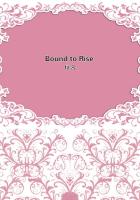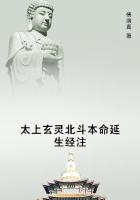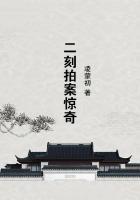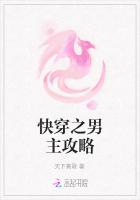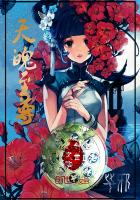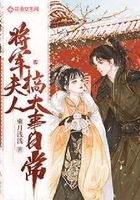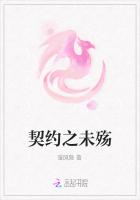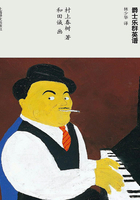[589]--Chandragiri.
[590]--See above,p.315.
[591]--Achyuta.
[592]--Belgaum.
[593]--These two may perhaps be two of the three powerful brothers Rama,Tirunnala,and Venkatadri,of whom the two first married two daughters of Krishna Deva.In such case,however,they would not have been actually brothers-in-law of King Achyuta,but of his brother the late king.
[594]--A mangelin is roughly equivalent to a carat,hut actually the difference is one-fifth;4mangelins =5carats.So that 130mangelins =162carats,The KOH-I-NUR,when brought to England,weighed 186carats (See Appendix A.)[595]--The word used is CATRE,a light bedstead,probably the origin of the modern South Indian word "cot,"for a camp bedstead.
[596]--ARQUELHA DE PRATA.ARQUELHA is a mosquito-net.Since manifestly the net itself could not be made of silver,the allusion is probably to its supports.Senhor Lopes,in a letter to me,suggests that it means the upper portion of the canopy,"LE CIEL DU LIT,"or the framework that holds the curtains,ARQUELHA being a diminutive of ARCO,a "bow"or "arch."In this case it might mean the domed ceiling of a canopy made in Muhammadan fashion,and the curtains may have been of silk or brocade,and not of mosquito-netting.
[597]--The word used is ARMADAS.It may mean "furnished"or "hung round with cloths,"or possibly "fenced"or "fortified."[598]--SEUS LEQUES must be a misprint for SEIS LEQUES.
[599]--Above,pp.121,281,and notes.
[600]--E YSTO HE COANTO A CACA.At the present day in Southern India game-birds are sold alive,generally with the eyes sewn up.
[601]--This evidently refers to the yak-tail whisks used in the service of idols in the temples and in the palaces of nobles.On occasions of ceremony at the present day any chief or noble who has a pretension to sovereignty,or who claims descent from a line of independent lords,proclaims his dignity by the use of certain insignia,and amongst these the yak-tail fan finds place.It is one of the most graceful of ornaments.The soft white hair is set in a metal handle of brass or silver and waved slowly by an attendant.Its material object was to keep away flies.
[602]--PACHARI for PICHHAURI.
[603]--Above,p.263.
[604]--"Silken trappings."The original word is PATOLLAS.Later on (see p.383),in describing the king's dress,Nuniz writes,"OS SEUSVESTIDOS SAO PACHOIIS,"&c.Both these words probably refer to the same Canarese word,PATTUDA,"a silk cloth."Barbosa and Pinto use it in the form PATOLA,Correa as PATOLO,and Peyton (in Purchas)as PATOLLA.(Yule and Burnell's Glossary,S.V.PATOLA)In Telugu,PATTU ="silk."[605]--JUNTAS.The meaning is doubtful,but in all probability yokes of oxen are referred to.In the Canarese country these are often handsomely decorated and clothed when attached to travelling vehicles.
[606]--TERREIRO.
[607]--RODAS DE BICOS.These may perhaps have been weapons such as in England were known as "knuckledusters."[608]--A free translation.The original runs,"DE MANEIRA QUE OQUE FICA DE BAIXO D OUTRO MAIS FERIDO VAY,LEVA A FOGACA,QUE HEHUU PACHARIM,"&c.It seems curious that the vanquished should be rewarded.LEVA A FOGACA is literally "takes the cake."For PACHARIMsee above,p.376note 2.
[609]--This is he only occasion on which the chronicler gives the king his hereditary title of Raya,usually spelt RAO by the Portuguese.RAYA is the same as RAJA.
[610]--The Qutb Shah of Golkonda.
[611]--Whether true or not,this statement,coming as it does from a totally external source,strongly supports the view often held that the ryots of South India were grievously oppressed by the nobles when subject to Hindu government.Other passages in both these chronicles,each of which was written quite independently of the other,confirm the assertion here made as to the mass of the people being ground down and living in the greatest poverty and distress.
[612]--When passing through the city,probably.
[613]--MEYRINHO.
[614]--FARAZES.
[615]--SANEIS QUE ENSYNDO OS CAVALLOS.
[616]--Above,p.361,and note.
[617]--BOIS.Hindu women of the Boyi caste.The Boyis are Telugus,and are employed as bearers of palanqueens and other domestic service in Southern India.Hence the Anglo-Indian term "Boy"for a servant.
[618]--See above,note to p.377.
[619]--Telugu,KULLAYI.See pp.210,252,273.
[620]--DE FAZEMDA.I think that the meaning is as given.It will be observed below that the kingdom was divided into provinces or estates,each one entrusted to a noble who farmed the revenue to his own advantage,paying a fixed sum every year to the king.In the case of Narvara,the treasurer of the jewels,his estate is described as "bordering on the country of Bisnaga,"and as this expression cannot refer to the entire country ruled by the king,it must be taken in a limited sense as applying to the king's own personal lands --his home farm,so to speak.The system is well known in India,where a prince holds what are called KHAS lands,I.E.lands held privately for his own personal use and benefit,as distinct from the lands held under him by others,the revenue of which last ought to go to the public purse.

